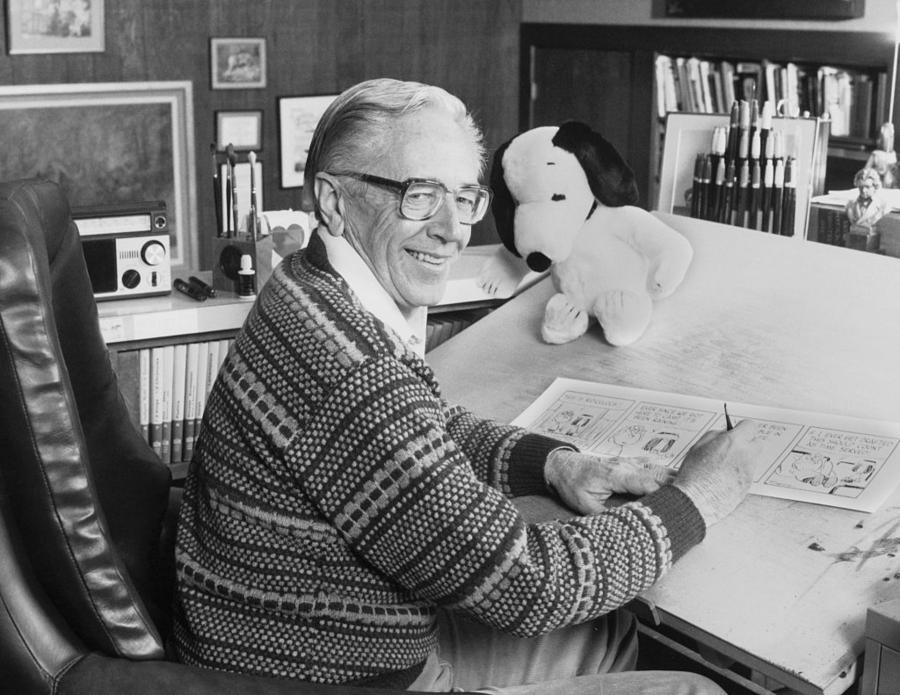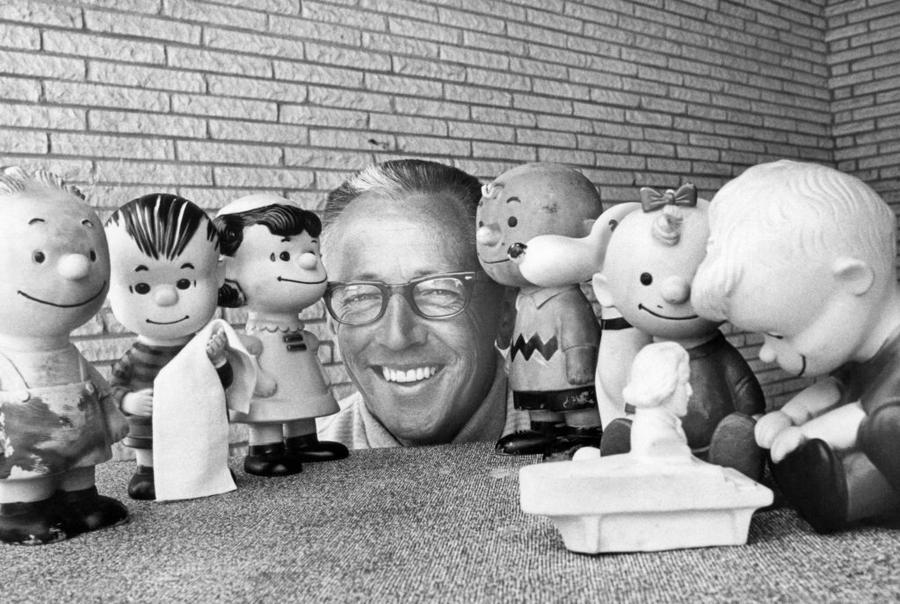It's been 25 years since Charles Schulz passed away, but the world he created—a round-headed boy, a mischievous beagle, and a gang of lovable misfits—has never been more alive. The Peanuts gang has appeared in nearly every corner of global culture: on cereal boxes and sneakers, in MetLife commercials and Apple TV+ shows, on backpacks in Japan and roller coasters in California. What began as a quiet, four-panel comic strip in 1950 has ballooned into a multi-billion-dollar empire—one of the most enduring and profitable intellectual properties of all time.
That empire is still paying off. Schulz himself earned an estimated $1 billion during his lifetime. But astonishingly, his death in 2000 was not the end of the Peanuts fortune—it was the start of its second act. In the years since, Schulz's estate has earned hundreds of millions of dollars in licensing fees, merchandising royalties, syndication deals, and animated content partnerships. In a typical year, Schulz's heirs earn more than the combined estates of cultural titans like John Lennon, Jimi Hendrix, and Elizabeth Taylor.
How did this happen? How did a shy cartoonist from Minnesota build an empire from a few scribbled children and a dog with dreams of grandeur? And how has his creation continued to mint money a quarter-century after his passing? This is the story of how Peanuts became one of the most powerful posthumous brands on the planet—and how Charles Schulz became one of the richest dead celebrities of all time.
From St. Paul to the Funny Pages
Charles Monroe Schulz was born in 1922 in Minneapolis, Minnesota. Like his future character Charlie Brown, his father was a barber, his mother a homemaker, and his childhood was marked by quiet introspection. As a boy, Schulz was obsessed with drawing—especially Popeye—and by high school, he was submitting cartoons to his school paper and local magazines, though with little success. He skipped two grades in elementary school, which left him younger and socially isolated among his classmates. His grades weren't great, but his ambitions were clear: he wanted to be a cartoonist.
After high school, Schulz enrolled in a correspondence art course and soon found work at a Catholic magazine drawing cartoons of a family with quirky pets. But his plans were interrupted when he was drafted into World War II. He served in Europe with the 20th Armored Division, eventually attaining the rank of staff sergeant. After the war, he returned to Minnesota and resumed his dream of cartooning, picking up freelance work while developing a concept of his own.
In 1949, Schulz began publishing a strip called Li'l Folks in the St. Paul Pioneer Press. A year later, United Feature Syndicate offered to syndicate his work nationally—on one condition: the name had to change. Schulz loathed the replacement title, Peanuts, calling it "totally ridiculous." But he accepted the deal.
The very first "Peanuts" cartoon was published on October 2, 1950, a month after Charles turned 28 years old. In its first year of syndication, just seven national papers agreed to run the cartoon. Sigh. The next year, syndication picked up a bit, and Schulz managed to earn $90 a week in royalties, which is equal to around $1,200 a week in today's dollars ($62,000 per year). By 1953, Peanuts was a hit across the country and Charles was making $30,000 per year, equal to $360,000 today.
A Billion Dollar Cartoon
Within a few decades, the strip was syndicated in over 2,600 newspapers, translated into 21 languages, and read daily by hundreds of millions. But the real fortune came from licensing.
Peanuts became a merchandising juggernaut. Schulz licensed his characters to Hallmark, Mattel, and endless consumer goods. Snoopy appeared in Macy's parades, on lunchboxes, wristwatches, and pajamas. By the 1980s, Schulz was earning an estimated $30 million a year—roughly $95 million today. From 1990 until his death in 2000, he pulled in $40 million annually, equivalent to about $80 million per year in 2025 dollars. At the time, that made him the highest-paid entertainer on the planet.
Perhaps most impressively, Schulz wrote and drew every single Peanuts strip himself—17,897 in total—right up to the end. When he died of colon cancer on February 12, 2000, the final strip ran in newspapers the very next day. In his will, Schulz insisted that no new Peanuts comic strips be drawn after his death—a rare act of artistic control in the world of syndicated comics.
At the time of his death, in February 2000 at the age of 77, Charles Schulz's net worth was $200 million. That's the same as around $375 million in today's dollars. But that was just the beginning…

(via Getty)
A Posthumous Empire
Following Schulz's death, the Peanuts brand didn't fade. If anything, it grew stronger. Between 2001 and 2024, Schulz's estate earned an average of $30–40 million per year. Here's a sampling of the estate's annual earnings:
- 2001–2005: $20M to $35M annually from licensing, syndication, and classic TV specials
- 2010: A pivotal year. United Feature Syndicate, which had distributed Peanuts since 1950, sold the IP to a newly formed joint venture called Peanuts Worldwide LLC. The buyer was a partnership between Iconix Brand Group, which acquired an 80% stake for $175 million, and the Schulz family, which retained 20% ownership, ongoing royalty rights, and final creative approval over how the characters are used.
- 2015: The Peanuts Movie grosses $246M worldwide, sparking a revenue surge to $40M+
- 2016: Schulz's estate hits an all-time high with $48M in earnings
- 2020–2024: Thanks to new Apple TV+ series and specials, the estate earns between $30M and $40M annually
All told, Schulz's estate has earned close to $1 billion since his death—more than most celebrities earn in their lifetimes. Even today, Schulz regularly ranks among the top five highest-paid dead celebrities every year.

Schulz in 1966 (Photo by Underwood Archives/Getty Images)
Who Owns Peanuts Today?
In 2010, United Feature Syndicate sold the Peanuts IP to Iconix Brand Group, which formed a new company called Peanuts Worldwide LLC. Schulz's family retained a 20% ownership stake in the newly formed Peanuts Worldwide. Then, in 2017, Iconix sold its 80% stake to Canadian media company DHX Media (now called WildBrain) for $345 million.
In 2018, Japanese giant Sony Music Entertainment acquired a 39% stake in Peanuts from WildBrain, leaving the current ownership structure as follows:
- WildBrain: ~41%
- Sony Music (Japan): ~39%
- Schulz Family: 20%
The Schulz family—via their company Charles M. Schulz Creative Associates—still benefits enormously. They hold veto power on certain creative decisions and earn royalties through both ownership and licensing agreements. Schulz's son Craig has been heavily involved in recent Peanuts productions and business decisions.
Charles' five children made a red carpet appearance at the 2015 premiere of "The Peanuts Movie." From left to right in the photo below are: Jill, Craig Schulz, Meredith, Monte, and Amy Schulz.

(Photo by Michael Tran/FilmMagic)
Still Drawing Dividends
A quarter-century after his passing, Charles Schulz's empire is still going strong. New Peanuts shows stream to millions of Apple TV+ subscribers. Snoopy merchandise lines shelves from Tokyo to Target. Holiday reruns of "A Charlie Brown Christmas" continue to charm new generations—and rake in royalties. What started as a modest comic strip has become one of the most durable commercial juggernauts in media history.
It's easy to admire Schulz for his artistic discipline—for writing and drawing nearly 18,000 strips by hand, for refusing to let anyone continue the strip after his death, for building a world so emotionally resonant that it outlived him by decades. But it's just as remarkable to recognize the business behind the beagle: the licensing foresight, the estate management, the way Peanuts has evolved without ever straying from its creator's vision.
So while Charlie Brown may never win a baseball game, and Lucy may never let him kick that football, Schulz's legacy is anything but a downer. In fact, it's a blockhead-level blowout—a billion-dollar reminder that even in the afterlife, Snoopy still sleeps on top of the doghouse, Woodstock still chirps with joy, and Charles Schulz still earns enough to keep the kite stuck firmly in the money tree.
/2025/05/Charles-Schulz.jpg)
/2013/05/GettyImages-85259926.jpg)
/2021/05/jim-davis.png)
/2017/11/GettyImages-85259926.jpg)
/2021/04/richest-celebrities.jpg)
/2018/09/hamilton.jpg)
/2020/06/taylor.png)
/2019/10/denzel-washington-1.jpg)
/2009/09/Brad-Pitt.jpg)
/2019/04/rr.jpg)
/2020/02/Angelina-Jolie.png)
/2009/11/George-Clooney.jpg)
:strip_exif()/2009/09/P-Diddy.jpg)
/2017/02/GettyImages-528215436.jpg)
:strip_exif()/2015/09/GettyImages-476575299.jpg)
/2020/01/lopez3.jpg)
/2009/09/Cristiano-Ronaldo.jpg)
/2019/11/GettyImages-1094653148.jpg)
/2020/04/Megan-Fox.jpg)
/2018/03/GettyImages-821622848.jpg)
/2009/09/Jennifer-Aniston.jpg)